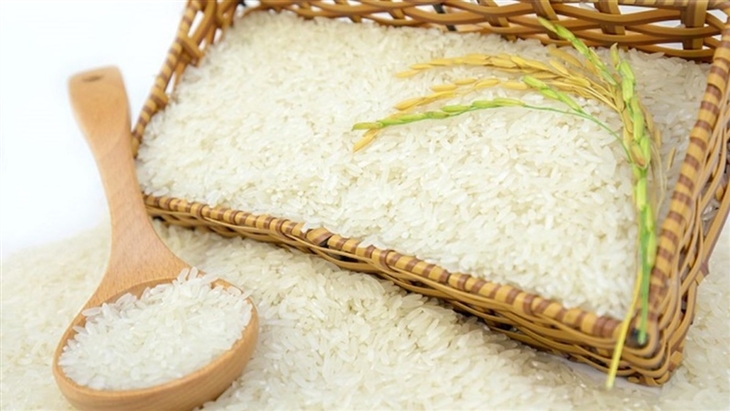Vietnam Rice update: Up to 1,100ha of farmland in northern region at risk of drought
Tuesday, May 30,2023
AsemconnectVietnam - About 1,100ha of farmland in the northern mountainous provinces face imminent risks of drought, according to the Department of Water Resources under the Ministry of Agriculture and Rural Development.
The northern province of Cao Bang is estimated to have 145ha of rice cultivation and 230ha of other crops at risk of water scarcity, concentrating in Ha Quang, Hoa An, Thach An, Trung Khanh and Bao Lac districts.
Up to 584ha of farmland in the northern province of Lang Son will likely suffer water shortages.
The water storage level in reservoirs across the northern region is now at 48% of their design capacity.
In the north central region, the storage level reaches 55.5% while it is at 71% and 36% in the south central and Central Highland regions, respectively.
Organic rice being grown in sand worm fields
Farmers in the northern province of Hai Duong have been experimenting with the cultivation of organic rice in association with raising sand worms and have achieved remarkable economic efficiency compared to traditional methods.
Farmers in Tu Ky district, Hai Duong province said sand worms are very sensitive to chemicals and can only live in clean soil and water. Therefore, farmers grow rice without the use of any chemicals. The rice and worms live in a symbiotic environment, with the rice providing a suitable environment for the worms to grow.
Since their main source of income comes from sand worms, local farmers must create the cleanest environment possible to ensure their stable growth and development.If a field is not clean and pesticides are used, the worms will die and farmers will face losing 300 million to 1 billion VND each year. To protect and promote the specialty Bai Rui rice, the local government has mapped out a plan to develop high-tech agricultural production and organic agricultural products such as sand worms and rice. This includes financial support, seeds, and technology transfer for local farmers to grow clean organic rice.
Strategy on rice export market development until 2030 approved
Deputy Prime Minister Le Minh Khai has just signed a decision approving the Strategy on Development of Vietnam's Rice Export Markets until 2030, which aims to develop and diversify rice export markets with a reasonable, stable, and effective scale, market and product structure.
Under the strategy, Vietnam will consolidate traditional and key export markets and develop new and potential ones, and those with which it has signed free trade agreements (FTAs). The country also targets increasing the market share of Vietnamese rice in markets, especially in developed countries.
Vietnam will also associate the export markets with domestic production according to value chains, ensure the quality and safety of exported rice, increasing the presence of Vietnamese rice and products processed from rice in direct distribution channels in markets.
The country also eyes the export of high-quality rice and rice-based products, increase their values, ensure sustainable exports, and affirm the prestige and brand of Vietnamese rice.
Export of rice posts highest growth among key agricultural products
Rice exports in April 2023 were estimated at 1.1 million tonnes with a value of 573.9 million USD, the Ministry of Agriculture and Rural Development reported.
The April figures have brought the total volume and value of rice exports in the first four months of the year to 2.95 million tonnes with 1.56 billion USD, up 43.6% in volume and 54.5% in value over the same period in 2022. This is the highest growth rate among key agricultural product groups.
Some other agricultural products also posted higher export value than the same period last year such as vegetables and fruits (up 19.4%), cashew nuts (3.4%) and coffee (2.5%).
Response plan to El Nino is imperative
According to numerous agricultural experts, 2024 is projected to experience severe droughts, water shortages and saltwater intrusion due to the impact of El Nino, so it is imperative to develop a long-term response plan at the earliest opportunity.
A report by the Department of Irrigation, under the Ministry of Agriculture and Rural Development, reveals that current water storage levels in reservoirs across the North, Central Highlands, and Southeast regions are at approximately 40-50% of their design capacity.
In the Central region, the storage levels range from 50-70% of the design capacity.
Several hydroelectric reservoirs are consistently replenishing water downstream, although at reduced levels compared to the average over many years. For instance, Ban Ve reservoir is at 38% capacity, which is 14% lower than the historical average, and A Vuong reservoir is at 44% capacity, reflecting an 18% decrease.
Between approximately 10,000 and 15,000ha of rice cultivation face imminent risks of drought and water scarcity. The Irrigation Department has expressed concerns regarding the preparation for autumn and summer rice cultivation, particularly in the Central region, which has not yet entered the rainy season and remains vulnerable to water shortages.
T.Huong
Source: Vitic
Fruit and vegetable export markets in first 4 months of 2023
Imports goods from China reached more than 32 billion USD in 4 months
Export turnover to Singapore reached 1.32 billion USD in first 4 months of 2023
Exports to Thailand reached 2.4 billion USD in first 4 months of 2023
DAILY: Vietnamese pepper prices increased by 1000 VND on May 30
Vietnam’s exports and imports of petroleum in April and first 4 months of 2023
DAILY: Vietnamese coffee prices remained unchanged on May 30
Vietnam spent nearly 600 million USD importing vegetables and fruits in first 4 months of 2023
Vietnam posts trade surplus of 9.8 billion USD in five months
Agro-forestry-aquatic product exports drop 11% in five months
Vietnamese durian gets more farming area codes for export to China
CPI increases by 0.01% in May
Vietnam’s exports and imports of fertilizer in April and first four months
Reference exchange rate up 1 VND at week’s beginning


